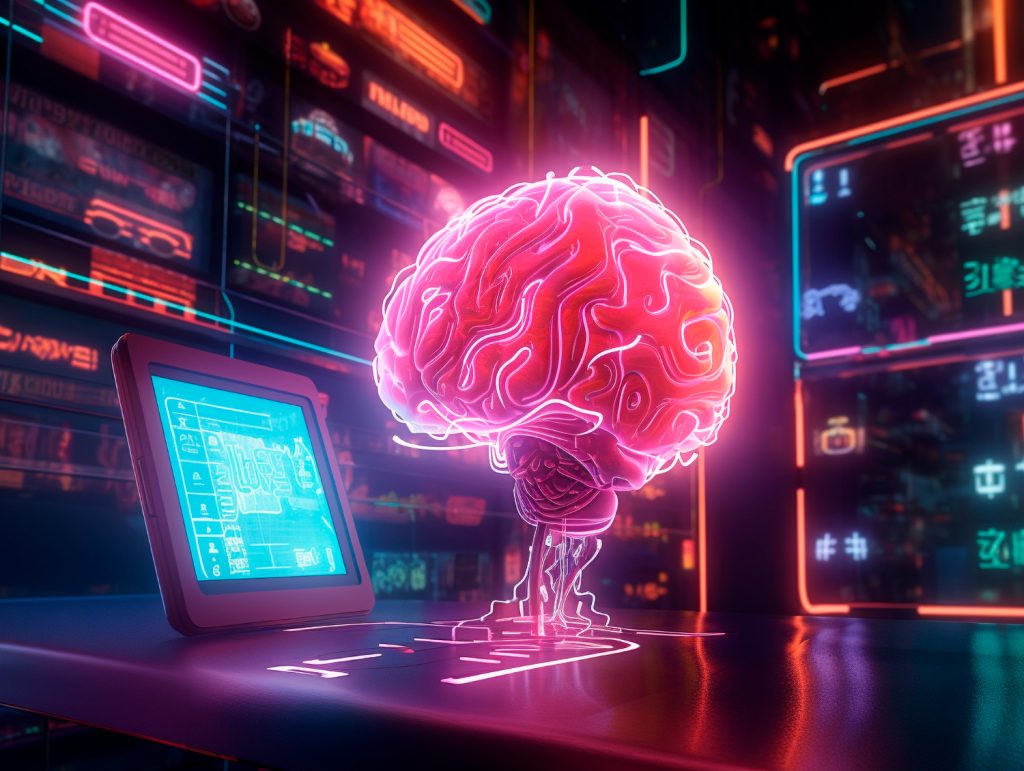Table of Contents
I. Introduction to Python and Artificial Intelligence
A. What is Python?
Python is a high-level, interpreted programming language known for its simplicity and readability. Developed in the late 1980s and released in 1991, Python has grown into one of the most popular programming languages worldwide, thanks to its versatility and ease of use. Here are key features that make Python particularly suitable for AI development:
- Simple Syntax: Python’s clean syntax allows beginners to focus on problem-solving rather than getting caught up in complex syntax rules.
- Dynamic Typing: You don’t need to declare variable types explicitly, which makes rapid prototyping easier.
- Extensive Libraries: Python boasts a rich set of libraries and frameworks specifically designed for AI, relieving you from building every component from scratch. Some popular libraries include:
- NumPy for numerical computing
- Pandas for data manipulation
- Matplotlib for data visualization
- Scikit-learn for machine learning
- TensorFlow and PyTorch for deep learning.
B. Understanding Artificial Intelligence
Artificial Intelligence (AI) is a broad field focused on creating algorithms that enable machines to perform tasks that typically require human intelligence. This includes reasoning, learning, problem-solving, and perception.
- Narrow vs General AI:
- Narrow AI excels at specific tasks (e.g., voice assistants, recommendation systems).
- General AI refers to machines that possess the ability to perform any intellectual task a human can do—this remains largely theoretical at present.
- Real-World Applications of AI: AI is everywhere! From self-driving cars to virtual personal assistants and automated customer service, AI influences numerous aspects of our daily lives.
C. Why Choose Python for AI?
Python has established itself as the go-to language for AI development due to several key factors:
- Popularity and Demand: Many companies prefer Python for its simplicity, which leads to quicker project completion. It’s also a frequently requested skill in job postings related to AI and data science.
- Versatility: Unlike languages like C++ or Java, Python can be used for scripting and automation in addition to AI programming.
- Strong Community: Python has a vibrant community of learners and professionals. This means a wealth of tutorials, forums, and resources are available to help you on your journey.
you can also read more in my another blog about my Journey from Python to Generative AI
II. Setting Up Your Python Environment
A. Installing Python
Getting started with Python for AI is straightforward. Here’s how to install it on your system:
- Python Version Selection: It’s recommended to install the latest stable version. Check the official Python website for details.
- Installation Steps:
- Windows: Download the installer, run it, and ensure to check the box that adds Python to your PATH.
- macOS: You can use Homebrew by running brew install python, or download the installer from the website.
- Linux: Most distributions come with Python pre-installed. You can update it by running sudo apt-get install python3.
- Verifying Installation: Open your terminal and type python –version (or python3 –version) to confirm the installation.
B. Integrated Development Environments (IDEs)
An IDE makes coding easier by providing essential tools in one place. Here are popular Python IDEs to consider:
- PyCharm: A powerful IDE, especially suitable for larger projects.
- Jupyter Notebook: Ideal for data analysis and AI development, as it allows you to create and share documents with live code.
- Visual Studio Code: A lightweight editor with many extensions for Python.
Setting Up Your IDE for AI Development
Make sure to install necessary extensions and set up your environment according to the project requirements.
C. Managing Packages and Libraries
Python Package Index (PyPI) hosts thousands of third-party packages. Here’s how to manage them:
- Using pip: This package manager allows you to install and manage Python libraries easily. For instance, use the command pip install numpy to install NumPy.
- Essential AI Libraries:
- NumPy for numerical operations.
- Pandas for data manipulation and analysis.
- Matplotlib for visualizing data.
III. Fundamental Concepts in Artificial Intelligence
A. Data and Data Processing
Data is the cornerstone of AI. Here’s why it matters:
- Importance of Data in AI: The quality of data directly affects the performance of your AI models. Good data leads to better insights and outcomes.
- Data Collection Methods: Data can be gathered from various sources such as APIs, databases, surveys, and web scraping.
- Preprocessing Data: This involves cleaning (removing inconsistencies and outliers) and transformation (altering data formats) to ensure it’s ready for analysis.
B. Machine Learning Basics
Machine learning is a subset of AI that focuses on allowing computers to learn from data.
- Types of Machine Learning:
- Supervised Learning: The model learns from labeled data.
- Unsupervised Learning: The model learns from unlabeled data, often finding hidden patterns.
- Reinforcement Learning: The model learns by receiving feedback from its actions.
- Introduction to Algorithms: Familiarize yourself with basic algorithms like linear regression and decision trees, which are essential for building models.
C. Neural Networks and Deep Learning
Neural networks are inspired by the human brain and are critical for deep learning.
- Overview of Neural Networks: A neural network consists of layers of nodes (neurons) that process inputs and generate outputs.
- Deep Learning vs Traditional ML: Deep learning models use more complex architectures and often require larger datasets to perform well.
- Popular Libraries: Learn about TensorFlow and PyTorch, which are widely used for building deep learning models.
IV. Developing Your First AI Project
A. Defining a Simple AI Problem
Identifying a suitable project is the first step.
- Identifying a Real-World Problem: Choose a problem that you are passionate about or that intrigues you. For example, predicting house prices or classifying images of cats and dogs can be great starting points.
- Setting Goals and Objectives: Clearly outline what you want to achieve with your project.
- Understanding Project Scope and Limitations: Be realistic about what you can accomplish, especially as a beginner.
B. Building a Basic Machine Learning Model
Let’s convert your idea into reality!
- Data Collection and Processing: Gather your data and clean it as discussed earlier.
- Choosing an Appropriate Model: Based on your problem, choose a model that fits. For simple tasks, start with linear regression.
- Training and Evaluating Your Model: Split your data into training and testing sets to gauge the model’s effectiveness.
C. Iterating and Improving Your Model
Every model can be improved!
- Analyzing Results: Look at accuracy, precision, and recall to understand how well your model is doing.
- Fine-Tuning Hyperparameters: Adjust parameters to see how they influence your model’s performance and improve results.
- Implementing Feedback Loops: Allow your model to learn from new data or user feedback, enhancing its effectiveness continually.
V. Resources for Continued Learning in Python and AI
A. Online Courses and Tutorials
Many platforms offer excellent resources for learning.
- Recommended Platforms: Check out Coursera, edX, and Udemy for a range of courses on Python and AI.
- Key Courses for Beginners: Look for introductory courses that emphasize hands-on projects since practice is key.
B. Books and Publications
Books can be a valuable resource in deepening your understanding.
- Notable Books: Titles like “Python Machine Learning” and “Hands-On Machine Learning with Scikit-Learn and TensorFlow” are well-regarded.
- Research Papers: Reading current research can keep you updated on trends and advancements.
- Blogs and Websites: Follow AI-focused blogs to stay engaged with the community and hear about new innovations.
C. Community and Support
Being part of a community can greatly enhance your learning experience.
- Joining AI and Python Communities: Platforms like Stack Overflow and Reddit have active discussions about programming and AI.
- Finding Help: Don’t hesitate to ask questions in forums or discussion boards.
- Participating in Hackathons: Engage in coding challenges or hackathons to test your skills and collaborate with others.
VI. Summary
A. Recap of Key Points Discussed
We explored Python’s strengths in developing AI projects, set up your programming environment, and touched on crucial AI concepts, from data processing to machine learning models.
B. Importance of Practice and Continuous Learning in AI
The field of AI is rapidly evolving, and continuous learning is vital for staying relevant and effective.
C. Encouragement for Beginners to Start Their AI Journey
Embarking on your AI journey can be incredibly rewarding. Start small, stay curious, and remember: every expert was once a beginner!
VII. Frequently Asked Questions (FAQs)
A. What are the prerequisites for learning Python and AI?
No specific prerequisites are required, but a basic understanding of programming concepts can be helpful.
B. Is prior programming experience necessary to get started with Python for AI?
Not at all! Python is beginner-friendly, and many resources cater specifically to newcomers.
C. How long does it take to become proficient in Python for AI?
The timeframe can vary widely, but with consistent practice, many find they grasp the fundamentals in a few months.
D. Are there specific industries where Python for AI is more applicable?
Yes, industries like healthcare, finance, and marketing leverage Python for various AI applications.
E. What are the common challenges faced by beginners in AI?
Many beginners struggle with understanding complex mathematical concepts and managing large datasets, but practice and patience make it manageable!




This is Awesome Thank you, However, I believe this should be Practical Base course